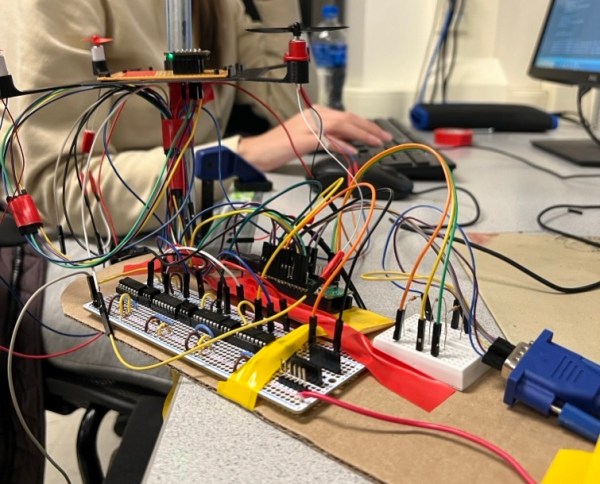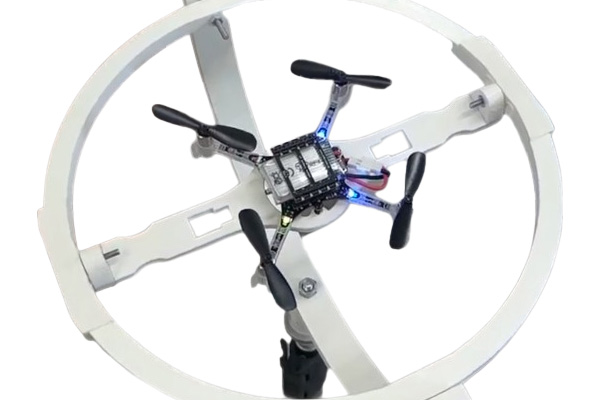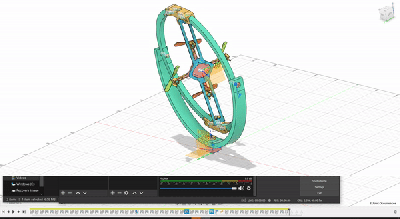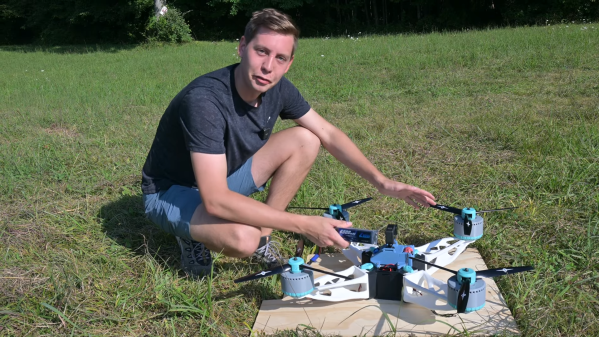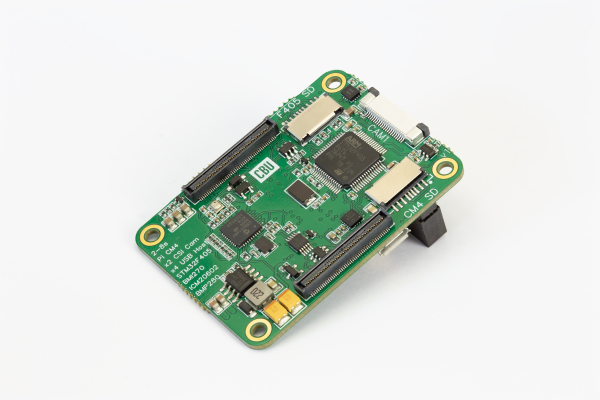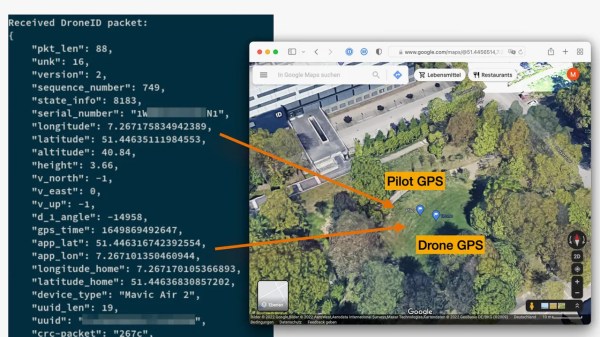Making a quadcopter go fast would seem to be quite simple: just strap on powerful motors, aim the quadcopter roughly at where you want it to go fast, and let ‘er rip. Because of aerodynamics and other pesky physical laws there are a few complications to this, of course, but this didn’t deter [Luke Bell] and his father [Mike Bell] from nailing the Guinness World Record for remote-controlled quadcopters on April 21, 2024. During the official run, a top speed of 480.23 km/h was recorded, making it considerably faster than the first version they made, which hit a measly 400 km/h.
For this second iteration of the ‘got to go fast’ quadcopter, the design was scaled up, with more powerful motors and associated electronics added. Naturally, when you’re pushing brushless motors and their ESCs to their limits, stuff can get a bit hot due to the immense currents flowing through the system. This resulted in a number of battery, wire and other fires. Fortunately, the worrying aspect of in-flight stability got addressed pretty well courtesy of a professional drone trainer, and ultimately the world record attempt went off without a hitch.
An endurance test was also attempted, which reached 7.5 km at 180 km/h, and with the clear canopy in from of the camera removed, visual performance was pretty stunning, while still easily reaching 400 km/h. This might make it the perfect high-speed chase camera system.
Thanks to [Craig] for the tip.
Continue reading “New Quadcopter Speed World Record Set At Nearly 500 Km/h”


